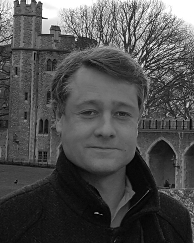Main content
Top content
Projekt P3/2
Titel
Combinations of Damped Harmonic Oscillations as Stable Building Blocks of Autocorrelation Functions in Quantum Many-Body Systems
Projektleiter
- Prof. Dr. Jochen Gemmer (Universität Osnabrück)
- Prof. Dr. Robin Steinigeweg (Universität Osnabrück)
- Prof. Dr. Kristel Michielsen (Forschungszentrum Jülich)
 |  |  |
Kurzbeschreibung
The seemingly paradox emergence of the phenomenon "equilibrium" from the underlying unitary, to some extend reversible, quantum dynamics has been unraveled in the last decades to a good degree. The eigenstate thermalization hypothesis and quantum typicality proved to be major concepts in facilitating this progress. Far less understood are the peculiarities and principles characterizing and governing the route from nonequilibrium to equilibrium. Why is there, e.g., a so-called "arrow of time"? Why do we never see a cup of coffee cooling down to room temperature just to substantially reheat after, say, a week (to eventually cool for good)? Interestingly the above concepts do not rule out such a behavior, not even for the overwhelming majority of initial states. Given specific Hamiltonians (which may be physically special, but not inconsistent with the framework of standard quantum mechanics) we should indeed encounter such strange relaxation processes. With the project at hand we intend to detail and scrutinize the hypothesis that such strange relaxation processes never occur in nature since the respective Hamiltonians are rather rare and unstable.
More or less recent research unveiled that "typical" dynamics, i.e., the dynamics that should result for the mathematically largest classes of all possible Hamiltonians, observables and initial states is very quick, much faster than the dynamics we usually observe for generic physical observables in macroscopic or mesoscopic systems. However, due to the enormous (mathematical) relative frequency among the triples Hamiltonian / observable / initial state, these quick relaxations are rather robust and insensitive to perturbations. In general almost any evolution may be viewed to be generated by some integro-differential equation featuring some memory kernel. The memory kernel may be viewed to arise from another memory kernel and so on. In this project we conjecture that among the physical, slow relaxations those are stable, in which the above hierarchy of memory kernels is "cut" after some iterations by a memory kernel which is very quick and thus rather robust. These specific dynamics are the above stable building blocks, a prime example being the simple exponential decay.
For a start we intend to focus on the dynamics of autocorrelation functions, thus to some extend excluding the question of initial states for conciseness. This restriction is also motivated by results found during the first funding period which suggest that, even beyond linear response, expectation values tend to follow the dynamics of the respective autocorrelation functions. The theory which is to be developed builds on the Mori projection operator formalism and on typicality.

